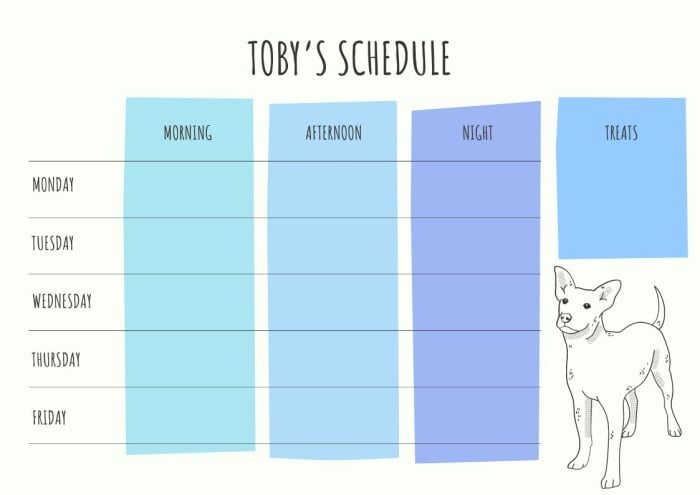Keeping track of your pet’s feeding schedule is crucial for their health and well-being. By creating a weekly pet feeding calendar, you can ensure that your furry friend is getting the right amount of food at the right times. This can help prevent overfeeding or underfeeding, which can lead to various health issues.
Having a set feeding schedule also helps establish a routine for your pet, which can reduce anxiety and behavioral problems. It can also make it easier for you to monitor your pet’s appetite and notice any changes that may indicate a health issue.
Weekly Pet Feeding Calendar
How to Create a Weekly Pet Feeding Calendar
Creating a weekly pet feeding calendar is simple and can be done in just a few steps. Start by determining the appropriate amount of food for your pet based on their age, size, and activity level. Divide this amount into the number of meals your pet needs each day.
Next, choose specific times for each meal and mark them on your calendar. Be sure to include any treats or supplements your pet may need throughout the week. It’s also helpful to note any feeding restrictions or special instructions from your veterinarian.
Tips for Using a Weekly Pet Feeding Calendar
Once you have created your weekly pet feeding calendar, it’s important to stick to it as closely as possible. Consistency is key when it comes to your pet’s feeding schedule. Keep track of any changes in your pet’s appetite or behavior and adjust the calendar as needed.
It’s also a good idea to review your pet’s feeding calendar regularly to ensure it’s still meeting their nutritional needs. If you have multiple pets, consider creating separate feeding calendars to avoid confusion or overfeeding.
